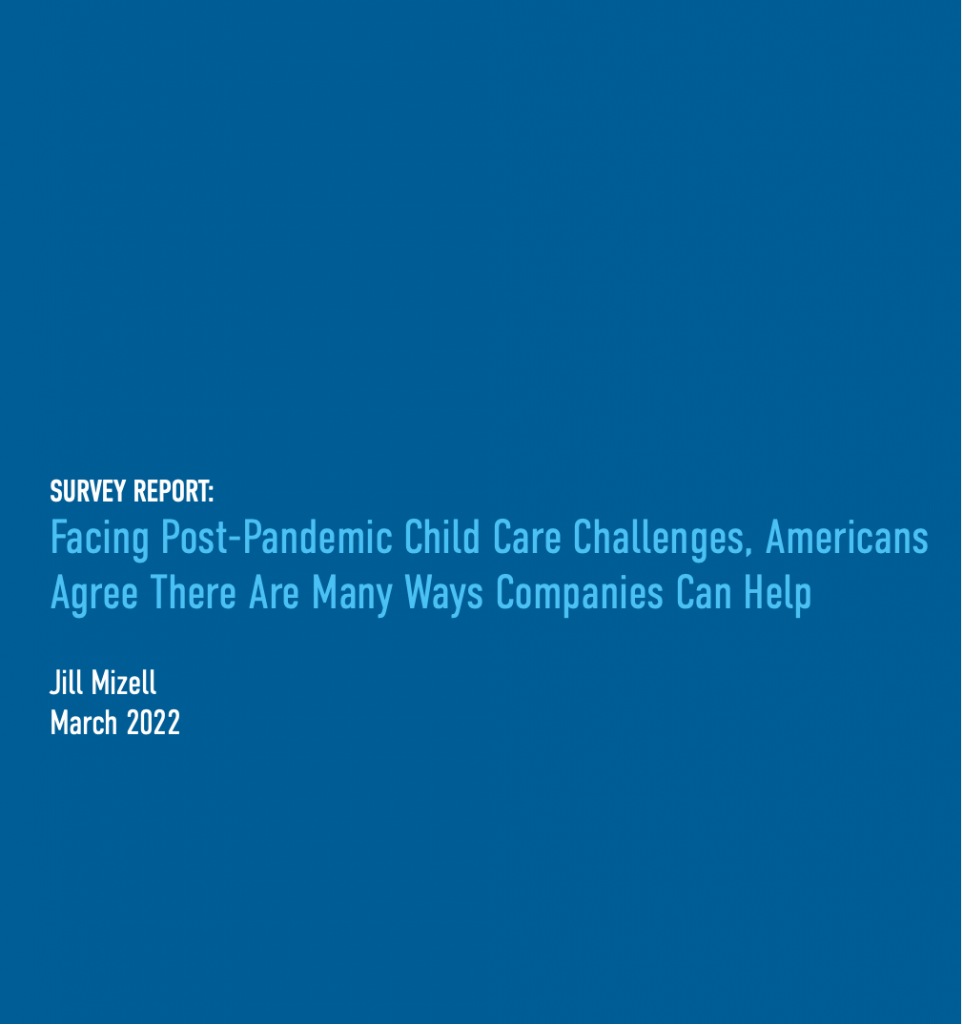JUST Report
SURVEY REPORT: Facing Post-Pandemic Child Care Challenges, Americans Agree There Are Many Ways Companies Can Help
- More Reports
- View All News & Reports on Polling
- View all JUST Reports
March 29, 2022
This report was written by JUST’s Director of Survey Research Jill Mizell.
In its 2021 report on the state of U.S. child care, the U.S. Department of the Treasury described the current system as a “market failure” that has led to “chronic underinvestment in our children.” For most children, particularly those under the age of five, care is available only through private financing from their parents, many of whom are at a stage in life when they are least able to afford it. And with the cost of child care more than doubling in the last 20 years, many parents report spending the bulk of their paycheck on child care expenses, and half of families say it’s difficult to find child care.
Despite the high cost to parents, child care providers operate with impossibly thin profit margins (1% or less) and are forced to keep labor costs low in order to stay afloat. As a result, there are fewer providers than can serve the number of young children that need care and more than half of Americans live in “child care deserts” where there are more than three young children for every licensed child care slot.
Even before the pandemic, child care in the United States was increasingly inaccessible for many parents, but COVID-19 only made a bad situation worse for both families and child care providers. By October of 2020, 166,000 child care workers had lost their jobs and the industry was 83% smaller compared to February of the same year. And according to the Bipartisan Policy Center, 60% of child care centers had closed as of April 2020, and while many have since reopened, they have reduced capacity to meet safety requirements.
With the pandemic shining a clear light on the persistent precarity of child care in the United States, JUST Capital and our polling partner, The Harris Poll, turned to the American public to learn their perspectives on the child care crisis, and their expectations of how companies can help parents balance caregiving responsibilities with working. You can explore topline takeaways from this analysis here, and dig into the full findings below.
